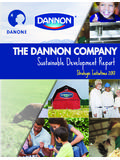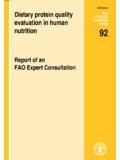Transcription of Fungal colonization of exotic substrates in Antarctica
1 Fungal Diversity DOI Fungal colonization of exotic substrates in Antarctica Brett E. Arenz & Benjamin W. Held & Joel A. Jurgens &. Robert A. Blanchette Received: 19 October 2010 / Accepted: 26 November 2010. # Kevin D. Hyde 2010. Abstract Throughout the history of polar exploration Keywords Antarctica . Fungi . Wood . exotic . and up to recent times, wood and other exotic materials Human-influence . substrates . Soil have been brought to the Antarctic continent and left there. While the possible transportation of exotic Fungal species on these materials is sometimes considered, the Introduction effects of these exotic substrates on indigenous Fungal communities have not been previously evaluated. This The early explorers of Antarctica left a remarkable historic study reports results from seven plots where organic legacy both in a cultural context and in a physical form materials were used in baiting studies to determine the with wooden structures and thousands of artifacts left on Fungal diversity present in soils.
2 Four plots were on the continent. These materials have provided potential islands in the Palmer Archipelago on the Antarctic vectors for exotic species of fungi to be introduced into Peninsula and three at Ross Island, Antarctica . Samples the continent. In addition, these exotic substrates represent of sterile wood and cellulose with and without nutrients a potential source of nutrients for use by indigenous soil added were buried in soil and left for either two or four fungi. Although woody plants do not currently grow on the years before being removed and evaluated for Fungal Antarctic continent, there is strong evidence that Antarctic colonization . There was a significant increase in Fungal fungi are able to colonize and degrade introduced wood and colony-forming units (CFU) from soil in direct contact other organic materials (Arenz and Blanchette 2009.)
3 With introduced, sterile wood and cellulose substrates Blanchette et al. 2004, 2010). These studies have docu- compared to background soil levels. The type of mented the diversity of fungi at historic sites on Ross Island substrate, 2 or 4 year incubation period in the field, or and the Peninsula region of Antarctica and their ability to nutrient addition did not have a significant effect on attack wood. Some of these research sites are associated culturable densities in soil. Fungal abundance on soil with the Heroic Era of Polar Exploration from 1901 . adhering to substrates was found to be similar to that 1914 including those on Ross Island left by the expeditions found in non-polar soils indicating that lack of organic of Robert Scott and Ernest Shackleton. Blanchette et al. material may be the most significant limiting factor (2004) first reported an unusual form of soft rot decay affecting densities of Antarctic Fungal populations.
4 Based affecting wood of the buildings and artifacts caused by on a high degree of colonization , these exotic substrates Cadophora species. This type of decay has subsequently appear to have a significant effect on indigenous soil been found to be prevalent in historic woods at many Fungal abundance. Antarctic sites (Arenz and Blanchette 2009; Blanchette et al. 2010; Held et al. 2005). Although the extremely cold and dry Antarctic environment strongly limits the rate of B. E. Arenz (*) : B. W. Held : J. A. Jurgens : R. A. Blanchette Fungal degradation, investigations have shown that fungi Department of Plant Pathology, University of Minnesota, can grow and cause significant impact over time. Held et al. 495 Borlaug Hall, 1991 Upper Buford Circle, St. Paul, MN 55108-6030, USA (2005) found that during the Antarctic summer, environ- e-mail: mental conditions conducive to Fungal growth, including Fungal Diversity temperatures above 0 C and relative humidity above 75%, area of the Station on Anvers Island, on Humble Island, and occurred for many weeks per year inside the historic huts at the Old Palmer Station site.
5 In addition, a plot was placed on Ross Island. on Limitrophe Island near Palmer Station in March, 2007. The diversity of fungi at these sites and in soils from the and a replacement plot was placed on the Old Palmer site immediate vicinity of the huts have been reported previ- since the original one established in 2005 had samples that ously (Arenz et al. 2006) and included a variety of were exposed at the soil surface due to the erosion of the filamentous fungi and yeasts and a single zygomycete top soil. In all cases, site locations for plots were chosen species. A similar study was undertaken on a large number because they represented a relatively flat 2 6 m homogenous of historic structures along the Antarctic Peninsula (Arenz area of open soil free of large rocks. and Blanchette 2009) and a similar mycological profile to Bait traps consisted of cm cm 10 cm pieces of the Ross Island sites with a high frequency of Cadophora, three different types of wood, spruce (Picea glauca), Geomyces and Cryptococcus species found.
6 More recently, southern yellow pine (Pinus sp.) and birch (Betula Blanchette et al. (2010) have reported that large numbers of papyrifera) as well as small pieces of cellulose (unbleached degradative fungi have colonized the exterior wood of cotton) placed in synthetic mesh bags. These four substrates Shackleton's Cape Royds hut and this site has relatively were configured in an alternating arrangement in eight rows high Fungal diversity, presumably due to large carbon and of 12 samples for a total of 96 baits per plot. Half of the nutrient input from the historic materials as well as substrates were vacuum saturated with a malt extract introductions from the penguin colony nearby. solution as a nutrient additive prior to placement in the Since it is not known how introduced carbon and field and the other half were vacuum saturated with distilled nutrient substrates influence Antarctic microbes, this study water as a control.
7 All samples were sterilized via was done to determine the effect of exotic substrate autoclaving and kept in sterile bags during transport to introduction on the composition and abundance of Fungal field sites. Samples were buried at the plot locations to a communities in the soil. Experimental field plots were depth of 5 cm. Each row was connected via nylon string to established and sterile substrates buried at Ross Island in a central aluminum pole in the plot to prevent loss of the Ross Sea Region and on the opposite side of Antarctica samples. at the Palmer Archipelago. substrates were chosen that At intervals of 2 and 4 years, samples were removed were similar to building materials used in the construction from the Ross Island plots and taken for analysis. At the of the historic huts as well as cotton as a source of cellulose completion of each interval, half of the samples were without lignin.
8 Effects on soil Fungal communities were removed (2006 and 2008) from Ross Island sites. In March, determined by taking colony counts based on dilution 2007, the 2 year samples from the Palmer Station site and plating of soils adhering to the substrates upon removal, the Humble Island site were removed for analysis. In and comparisons were made from soils not in contact with March, 2009, the 4 year samples from the Palmer Station substrates . Significant differences in colony counts between site and the 2 year samples from the Old Palmer and the two soil types would be indicative of substrate Limitrophe Island site were removed as they had been colonization /utilization. Utilization of wood as a baiting placed in 2007 as previously mentioned. The 4 year substrate has been used in the study of wood-inhabiting Humble Island site samples were unsuitable for analysis fungi in other environments such as mangrove swamps due to soil erosion which had exposed the substrates .
9 Four (Alias and Jones 2000; estuaries (Shearer 1972), beach soil samples were also taken from each plot at each corner sands (Tokoru 1984), freshwater streams (Latmore and at a depth of 5 10 cm to evaluate background soil microbial Goos 1978) and Antarctic sea water (Pugh and Jones 1986). and edaphic characteristics. This study represents the first report of a wood baiting Samples were removed from the soils using sterile technique in an Antarctic terrestrial environment. scoops and sterilized gloves to prevent sample contamina- tion. Individual samples were immediately placed into sterile Whirl-pack bags (Nasco, Fort Atkinson, WI) and Materials and methods kept at 4 C until arrival at the laboratory where they were kept at 20 C until processing. Three biodiversity sampling plots were established on Ross Substrate samples were analyzed for Fungal colonization Island in January of 2004.)
10 Four plots were also initiated by aseptically scraping off soil that adhered to the near Palmer Station in March, 2005. The Ross Island plots substrates and collecting it for culturing using a dilution were laid out approximately 100 200 m away from the series. One gram of scraped soil was added to an initial locations of the historic structures at Hut Point, Cape dilution of 9 ml sterile distilled H20 and shaken to disperse Royds, and Cape Evans. The plots near Palmer Station on soil particles. Further dilutions were made from this one in the Palmer Archipelago were installed in the backyard ten to a maximum of one in 100,000. One ml of each Fungal Diversity dilution series was then added to the top of 100 mm plates Substrate type (spruce, birch, pine, cotton), nutrient (malt of 1% Malt Extract Agar and Basidiomycete Select Agar enrichment vs.)






